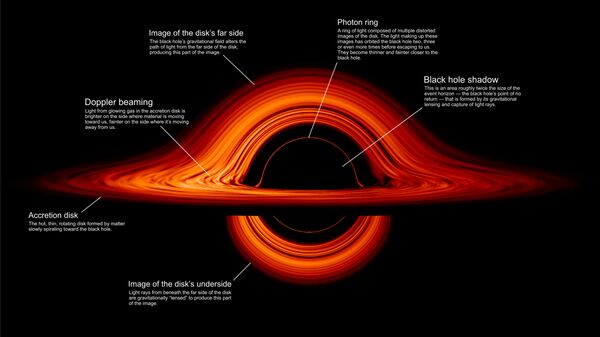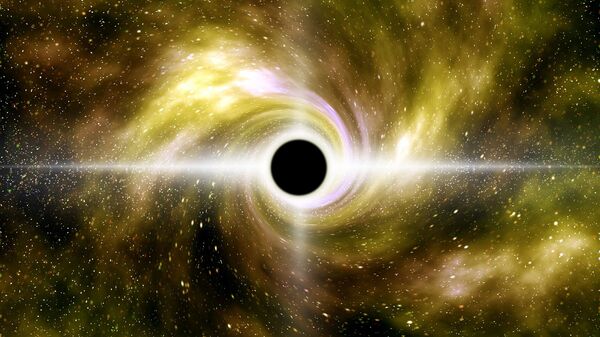The Russian-German astrophysicist space observatory “Spektr-RG” has discovered that a black hole in the centre of our galaxy that has been “silent” for a quarter of a century, has now woken up, the Institute of Space Research of the Russian Academy of Sciences (RAS) announced in a statement.
“On 1 April, while monitoring the sky, the telescope ART-XC from the orbital observatory 'Spektr-RG' registered a bright x-ray source around the centre of the galaxy", the institute said in the statement.
It added the source appeared to be black hole 4U 1755-338 that was first spotted by the x-ray space observatory Uhuru, but which “fell silent” in 1996 and hasn’t demonstrated any signs of activity since.
The statement says that the institute’s astrophysicists assumed there could be a new flare-ups from this black hole, caused by the resumption of gravity between the black hole and a substance from a nearby star.

The observatory “Spektr-RG” has at its disposal two telescopes: eROSITA, built by the Institute of Extraterrestrial Physics of the Max Planck Society (Germany), and ART-XC, designed by the Russian Institute of Space Research (of RAS) and manufactured in cooperation with the All-Russia Research Institute of Experimental Physics in Sarov, and the Marshall Space Flight Centre in Huntsville, Alabama.
Launched on 13 July 2019, the Russian-German space observatory “Spektr-RG” aims to compile a grand map of the universe, including black holes and decaying neutron stars, in the next four years, after taking high-resolution pictures of the entire sky in the x-ray spectrum. In October, it reached its main working spot located within 1.5 million kilometres from Earth and in December it set about monitoring the sky.
Overall eight maps will be drawn up, with half a year allocated for each of them. The most detailed one, which will combine all eight of the documents, will be completed and made public around 2025.

